Valve Steam Deck OLED review: colour me interested
Valve’s mid-gen refresh gains a bigger battery and stunner of a display, but do you need it?
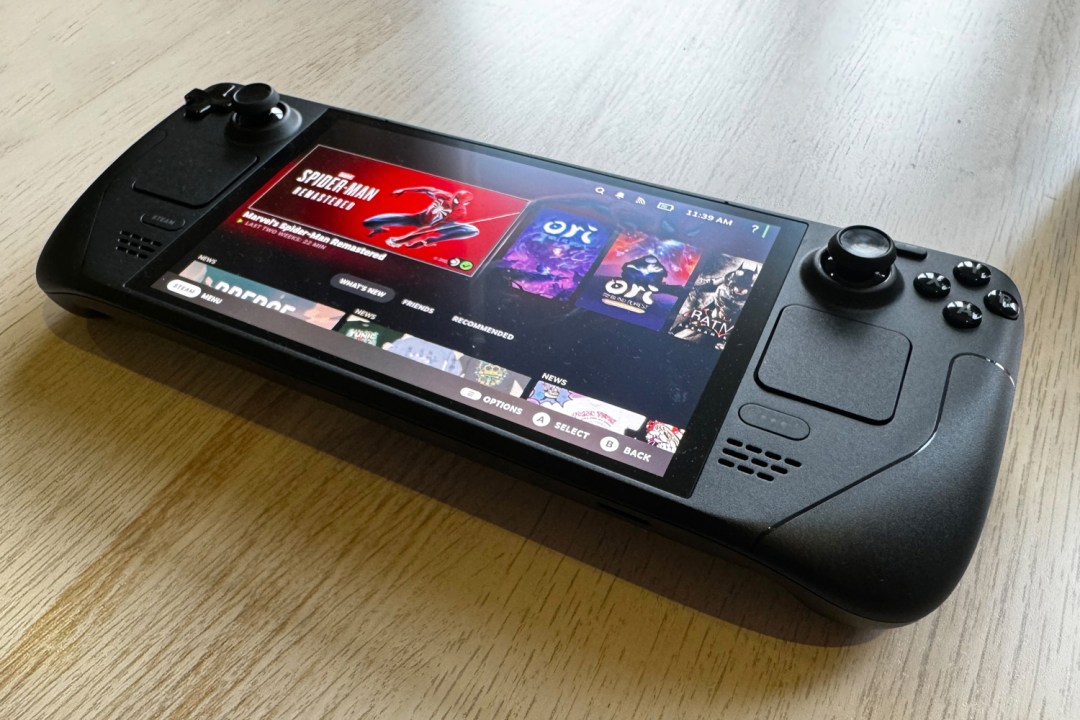
Stuff Verdict
Not the Steam Deck 2, but the ultimate first-generation Steam Deck, with a display to rival your OLED TV’s…
Pros
- Fantastic HDR OLED display
- Slightly easier to hold
- Better battery life
- Steam OS is just much nicer to use than Windows
Cons
- Same resolution as before and no more powerful
- Still a chonker
- Struggles with high-end modern titles
- No VRR
Introduction
When I reviewed the original Steam Deck just under two years ago, I experienced a whole lot of different emotions. I was thrilled by its power and useability, ever-so-slightly underwhelmed by its display, kind of terrified of its size, and frankly appalled by its pitiful battery life. But ultimately Valve’s game-changing handheld PC won me over to the extent that I’d have been pretty miffed if it hadn’t won Stuff’s prestigious gadget of the year award for 2022. Having (nearly) your entire Steam library in the palms of your hands was just too cool.
I didn’t expect a new Steam Deck to arrive so quickly, which had a lot to do with the fact Valve was trying very hard to convince us that it wouldn’t. but out of nowhere, the Steam Deck OLED is here. Like Nintendo’s Switch OLED, this shouldn’t be viewed as a sequel to the original model, but more a mid-generation revision. There’s a strong case that the Steam Deck OLED is a bigger improvement on the first attempt than Nintendo’s effort was; not only is that headline-grabbing HDR OLED display simply gorgeous, but the refreshed Steam Deck is also lighter, quieter and lasts considerably longer. Steam OS has also come a long way since launch.
As the Steam Deck OLED arrives at the tail end of 2023, it really does feel like the machine Valve always intended to make.
A lot of my original Steam Deck review still applies to the OLED model, so do go and read that too if you’re considering a purchase.
How we test gaming hardware
All games consoles and gaming hardware tested on Stuff are put through their paces with days’ worth of play time. We use our years of testing experience to judge areas such as build quality, software experience, battery life and other features. Manufacturers have no visibility on reviews before they appear online, and we never accept payment to feature products.
Find out more about how we test and rate products.
Design: A little counts for a lot



If someone put two powered-off Steam Decks, one LCD and one OLED, in front of you and asked which was which, you might struggle at first. Some of Valve’s tweaks are purely aesthetic, like the orange power button and the all black thumbsticks. Others genuinely enhance everyday use, like the 5% weight reduction (669 grams to 640). That might not sound like much but is immediately noticeable if you’re used to the original model.
The redesigned trackpad also has improved haptics, and the new material on the top of the thumbsticks feels pleasingly grippier than before. If you go for the 1TB model you get a new case that hides away a second, slimmer case within, which makes the Deck more travel-friendly.
Still, if you didn’t like the look and feel of the Steam Deck before, none of the changes made to the revised model are likely to change your mind. I called the OG Deck a “chunky boy” in my original review, and it still feels like one, but you only have to look at devices like Lenovo’s new Legion Go to know that the Steam Deck is no longer the monster truck of the gaming handheld market. For whatever reason it no longer feels impractically massive in my (far from large) hands. You can also make an argument that the Steam Deck is more ergonomically pleasing than the Nintendo Switch OLED, which is smaller but sits in your palms less snugly.
The button layout is exactly the same, which means you’ve still got mappable rear buttons in addition to the (still slightly too high) standard face buttons and triggers. The Steam button remains useful for quickly accessing your game library, the Steam store, your friends list and advanced settings. It also brings up a list of shortcuts when long-pressed.
Valve has decided not to equip the Deck OLED with a Switch-like kickstand, which without detachable controllers probably wouldn’t make a lot of sense anyway. A second USB-C port might have been nice, but it’s not a deal-breaker.
Screen and sound: Simply a stunner


An OLED display of any kind is worth celebrating, but the Steam Deck OLED’s headline feature isn’t just an OLED display. It’s a truly stunning 7.4in HDR OLED display built from the ground up for the Deck, with a 1,000,000:1 contrast ratio and 1000 nits of peak brightness in HDR-enabled games (600 nits for SDR). That has a transformative effect on games. Valve might be a few years away from shipping a more powerful Deck, but there’s no doubt that it’s given this mid-gen model the best possible display, and by shaving down the bezels from the original model it’s made the delicious screen more immersive to boot.
I was sent the 1TB model to test, which means my Deck OLED’s glass has an anti-glare coating; this makes it far less reflective and easier to play under bright light sources. It does mean, though, that colours possibly don’t quite burst off the screen in the same way they will on the glossy 512GB variant, nor do the blacks look quite as inky. I haven’t been able to compare the two myself so I can only go off what I’ve seen online, but it’s something to consider. Personally I think I’d still choose a display I can’t see my face in when I’m playing Hades (which, by the way, is even more jaw-droppingly good-looking on Valve’s new machine than it was on the Switch OLED), but the OLED experience is perhaps slightly more muted. Either way, your games are going to look fantastic.
The original Steam Deck’s display was fine, if a little washed out, but after putting it next to the OLED, I can’t go back. The colour accuracy is so clearly superior and images far more vibrant. When I heard the display featured HDR I was skeptical of how it would perform, possibly influenced by negative reports of HDR implementation on Windows handhelds. But here it really just works. Often HDR in supported games will activate automatically when you boot them, but if not it’s just a case of toggling it on in settings. There’s no fading to black or awkward transitions. The effect is more like turning on a light switch.
If you’re picking up a Steam Deck OLED you owe it to yourself to jump immediately into an HDR-enabled game, such as Marvel’s Spider-Man Remastered or Ori and the Will of the Wisps. The latter is held up as the gold standard of HDR performance in a game, so it naturally absolutely flies on the Deck OLED, rich in colour and bursting with light. Unfortunately, though, there aren’t actually that many HDR games to really make use of the tech.
Valve has also upped the Deck OLED’s refresh rate to 90Hz, from 60Hz on the original model. It makes for noticeably smoother general operation and gaming. Granted, the Steam Deck is not powerful enough to run modern AAA games at anything close to 90fps (more on that a bit later), but we easily got a range of indie games zipping along nicely at the higher frame-rate, and you can feel the difference. Valve has also simplified its frame-rate cap tool, which is now just one slider in the settings. You just drag it to your preferred frame-rate and the display automatically adjusts to the best refresh rate. While we wish Valve had added VRR support for even smoother visual performance, playing games on this display is a joy.
When all the OLED excitement wears off, though, you come to terms with the fact this is still a 1200×800 panel in a world where Windows handhelds are proving that higher resolutions are possible.
The original Steam Deck’s stereo speakers were already pretty great, but Valve has also improved the audio for the Deck OLED. They’re apparently bassier now, which I can’t say I was particularly struck by, but the good news is that this is still a handheld you can happily play games on without headphones.
Software: Steamy in here
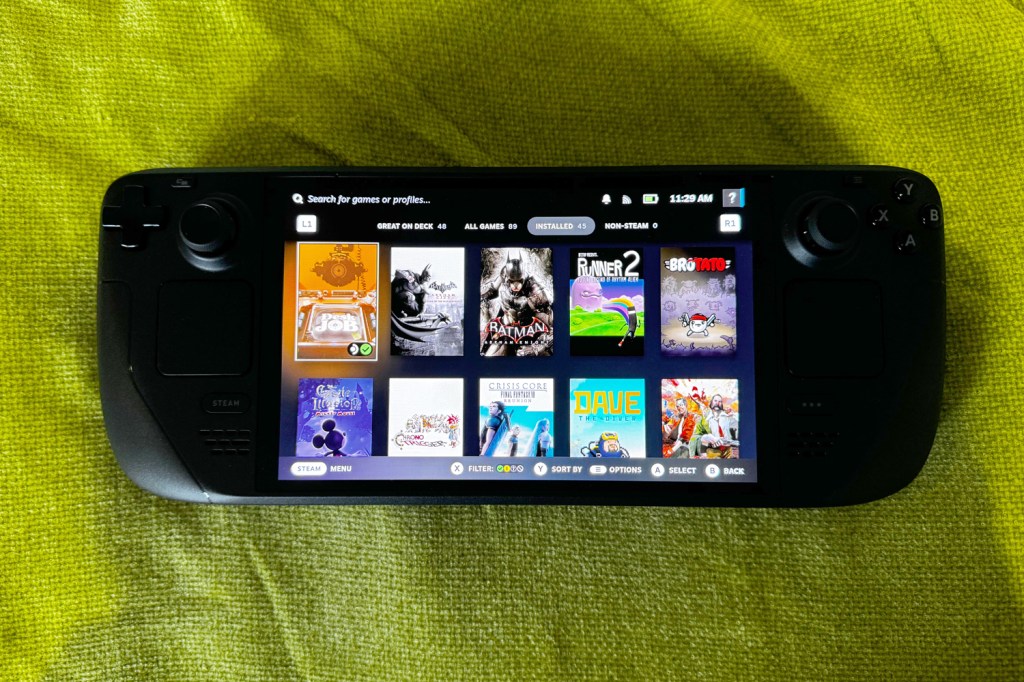
Depending on your needs and use cases, SteamOS can be either a blessing or a curse. The Linux-based operating system gives the handheld a decidedly console-like feel, and makes navigating the Steam Deck a breeze. By default your game library is still broken up into separate categories: all games; installed games; non-Steam apps; and games that meet the “great on Deck” certification, which means they play well and without any awkward control-based quirks. All games in the Steam store that haven’t yet met those requirements are indicated as such. They’ll either be listed as playable (usually with minor issues like needing software keyboard inputs), untested, or unsupported.
I’d have hoped that, nearly two years since the launch of the Steam Deck, I’d have a larger library of verified games. It’s true a lot of games Valve officially lists as only playable (and sometimes even unsupported) run absolutely fine on the device, and there are plenty of community-driven workarounds for those that don’t, but it can still be frustratingly hit and miss when you boot an unverified game. If you’re a tinkerer at heart then putting in the work to make something play as it should is half the fun, but first-time Steam Deck buyers should know from the off that they’re in for a bumpier ride than they might expect.
The tile-based layout is easy to make sense of and game artwork looks even better on the OLED display. Updates are all handled in the background without any user input and Valve has ironed out a lot of the early software bugs that were present at launch. We’re still dealing with a PC here, so you should expect the occasional freeze or crash every now and again, but overall SteamOS makes for a far smoother user experience than you get on rivals running Windows.
But the aforementioned “curse” part of the equation also concerns Windows. If you play the majority of your games through Steam, the Steam Deck is the machine for you – but things become trickier when you want to install other launchers in desktop mode. It’s totally possible to get Windows running on the Deck OLED, but doing so means you give up all the user-friendliness of the built-in software. Without it, though, there’s no native support for something like the Xbox app, which Windows handhelds like the Asus ROG Ally and Lenovo’s new Legion Go can run out of the box. On the Steam Deck, the easiest way to access Game Pass remains the cloud solution, which isn’t ideal for everyone.
Performance: Same(ish) as it ever was
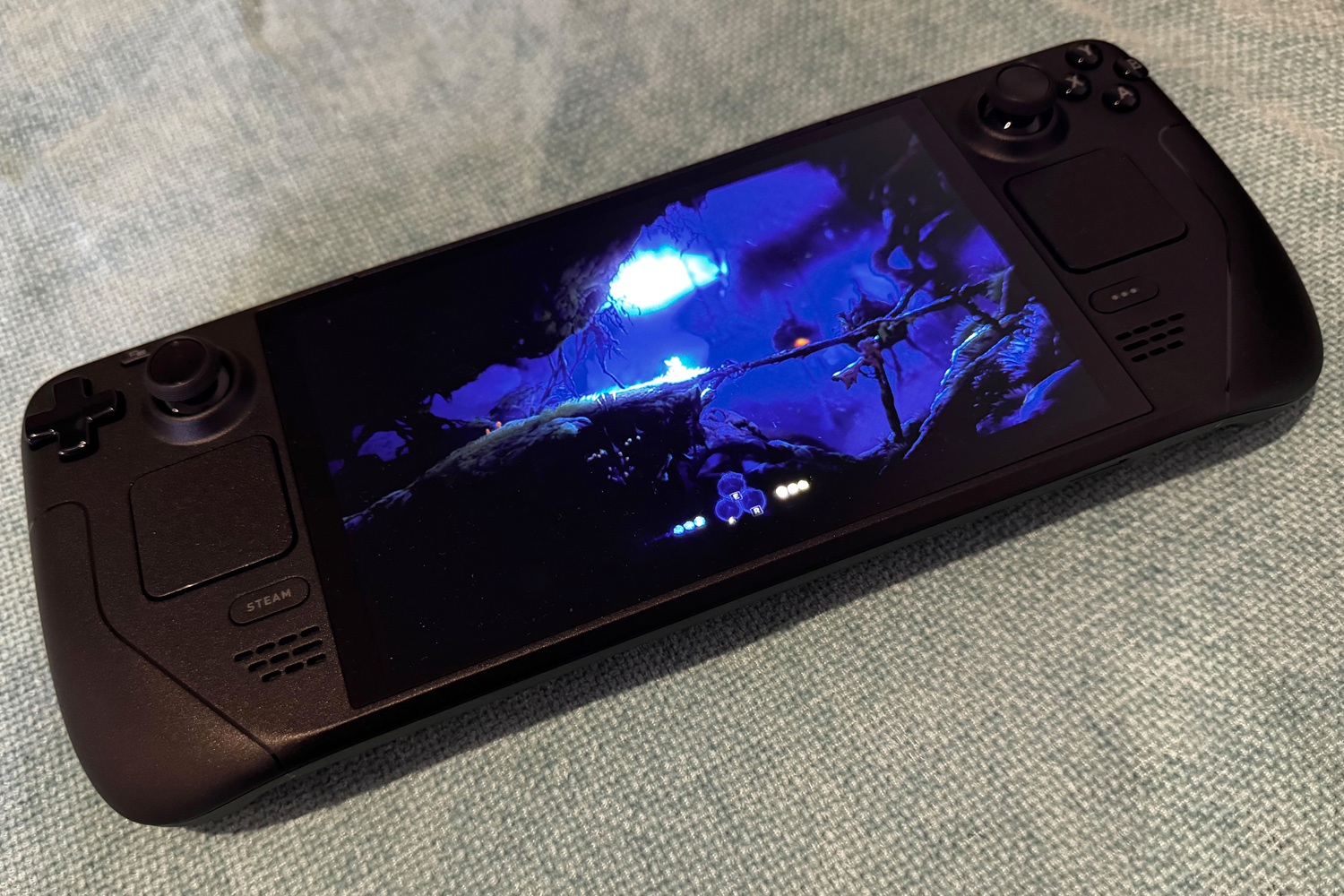
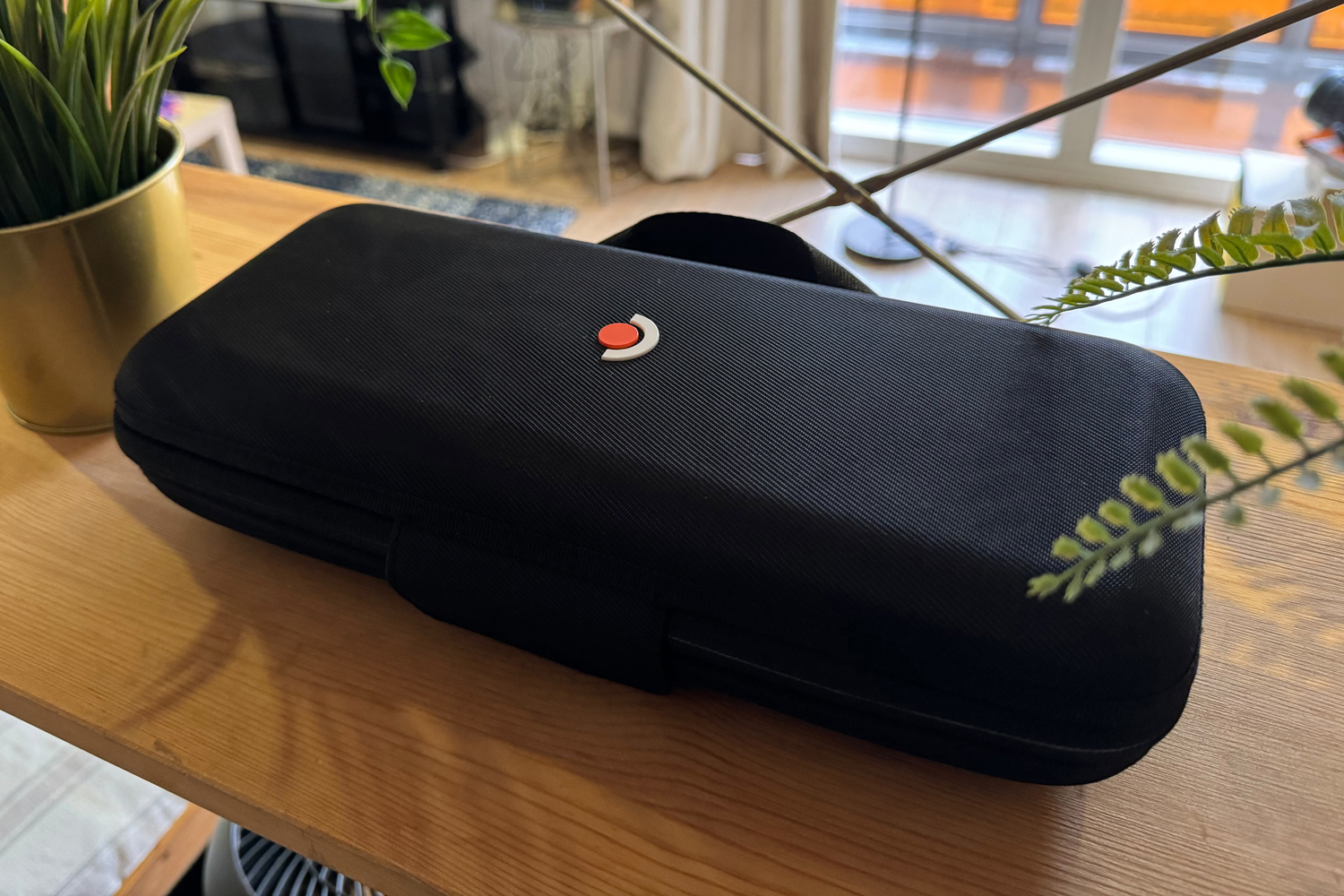
Valve has been very keen to stress that the Steam Deck OLED isn’t the Steam Deck 2, and the spec sheet mostly reflects that. But that doesn’t mean that this is exactly the same machine under the hood. The original deck’s 7nm AMD APU has been replaced by a more efficient, shrunken down 6nm chip, which draws less power and in turn generates less heat. There’s also a larger fan that is notably less noisy and bothersome, and slightly more memory to boot.
None of the above enhancements significantly impact the Steam Deck OLED’s handling of the latest AAA games. While you can make the likes of Returnal and Baldur’s Gate 3 run on the machine, the compromises made to fidelity, performance or both are hard to ignore, and you should probably forget about portable Starfield right now. Sure, you might notice slightly less input lag and stutter in processor-intensive games, but we’re talking marginal gains. Valve is waiting for a generational leap in available technology before releasing a true Steam Deck sequel, so until then you’re going to have to accept that some games are just going to be too much for it to handle.
However, if this is your first handheld gaming PC and you’re coming from a Nintendo Switch, you’re likely to be blown away by what the Deck OLED can do. The fact that I can play Batman: Arkham Knight (in my opinion still one of the best looking games ever made) on a handheld without making it look like sludge – albeit after some tweaking to get the frame rate anything close to 60fps – remains remarkable several years on. Locking it at something considerably lower and dialling things back a bit does result in a more consistently smooth ride when you’re in open world sections, though. Remember, FSR resolution scaling is your friend.
Some indies and older titles can now be played at frame rates above 60fps thanks to that new display, but to me the extra frames afforded by the 90Hz refresh rate feel beneficial even when capping the in-game frame rate at 40fps, which I often find to be the sweet spot in more graphically demanding games on the Deck. Swinging around Manhattan in Marvel’s Spider-Man just feels a bit smoother.
My biggest problem with the original Steam Deck was battery life, and this is the performance area where the OLED model does offer a serious reason to consider upgrading. A larger capacity 50Whr battery (up from 40Whr), coupled with the more efficient SoC and OLED tech means you can expect to play for longer before dashing for the nearest plug socket – 30 to 50% longer according to Valve’s marketing materials. It’s still very easy to burn through a full charge in under three hours, but with a bit of sensible performance management I’m now more confident about taking the Deck on a cross-country train journey. Handheld gaming PCs are still a long way from having anything you could reasonably call good battery life, but by focusing its energy on efficiency with the Deck OLED, Valve’s device is noticeably improved in that department.
Unlike its predecessor, the Steam Deck OLED supports Wi-Fi 6E, which isn’t a feature I’m able to make use of on my own home network, but will certainly be welcomed by anyone with the right setup.
Steam Deck OLED verdict
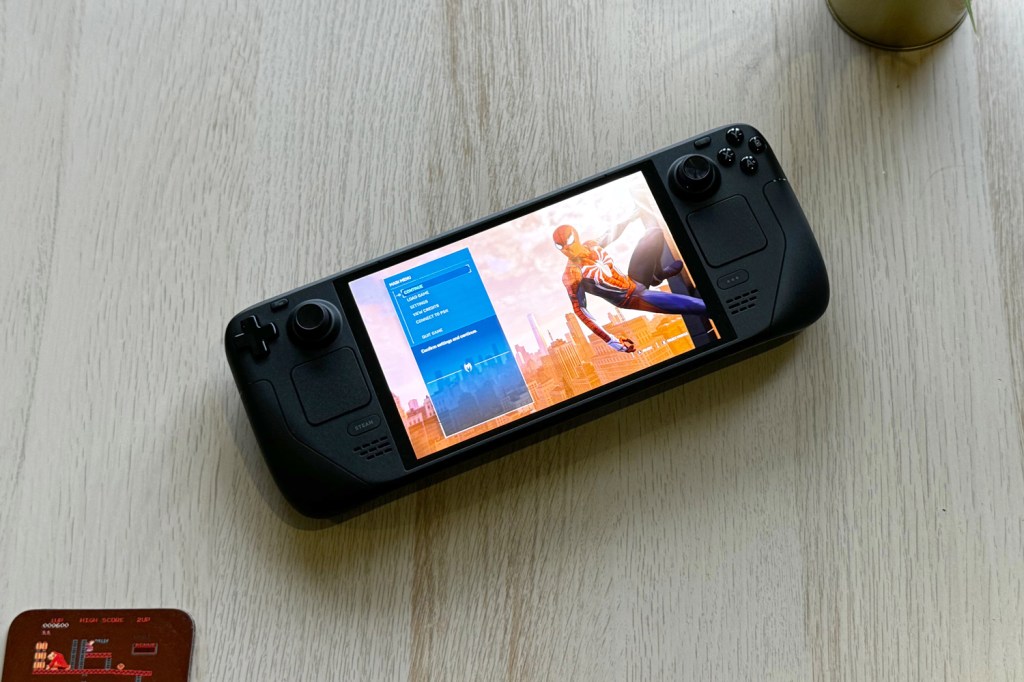
It has a lot more competition than it did at launch, but a unique marriage of hardware and software ensures that the Steam Deck remains the portable gaming PC to beat. And that status is further cemented now it has by far the most impressive display I’ve seen on a handheld gaming device. It’s nicer to look at, nicer to hold, and works better than it ever has.
But it’s still far from perfect. Several games in my Steam library simply don’t work. An Asus ROG Ally, despite all the Windows messiness that comes with it, is still a better bet for playing the latest and greatest games in handheld form if you want the best possible performance. Having an HDR display that works as smoothly as it does means I would favour the Deck OLED over a device with a higher resolution, but there currently aren’t enough HDR games out there for it to take advantage of. And the battery life, while inarguably improved, is still no better than OK.
If you want to see what all the fuss is about and are yet to hit the purchase button, I would absolutely recommend buying the Steam Deck OLED over the original LCD model, which is still on sale for a cheaper price but will eventually be phased out. As for those early adopters feeling burned by this pretty much out-of-nowhere refresh? I’d say hold on to your original model unless the Steam Deck is your preferred gaming platform. For casual users, of those for whom the Deck is firmly a secondary device, the OLED display, more manageable weight and better battery will definitely improve your experience – but probably not enough to justify splashing out all over again. By and large, they’re otherwise identical machines.
But if you’re reaching for the Deck more often than the Switch, a console, or your desktop, it might just be worth it for that display. The Steam Deck OLED makes the original feel like a rough draft, and until the inevitable true sequel arrives, it’s the most enjoyable way to play PC games, big and small, on the go.
Stuff Says…
Not the Steam Deck 2, but the ultimate first-generation Steam Deck, with a display to rival your OLED TV’s…
Pros
Fantastic HDR OLED display
Slightly easier to hold
Better battery life
Steam OS is just much nicer to use than Windows
Cons
Same resolution as before and no more powerful
Still a chonker
Struggles with high-end modern titles
No VRR
Steam Deck OLED technical specifications
| Screen | 7.4in, 1200×800 HDR OLED w/ 90Hz, 1000 nits brightness |
| CPU | Custom 6nm AMD “Sephiroth” APU |
| Memory | 16GB RAM |
| Storage | 512GB/1TB NVMe SSD, microSD expansion |
| Connectivity | Wi-Fi 6E, Bluetooth 5.3, USB-C |
| Operating system | SteamOS |
| Battery | 50Whr |
| Weight | 640g |



